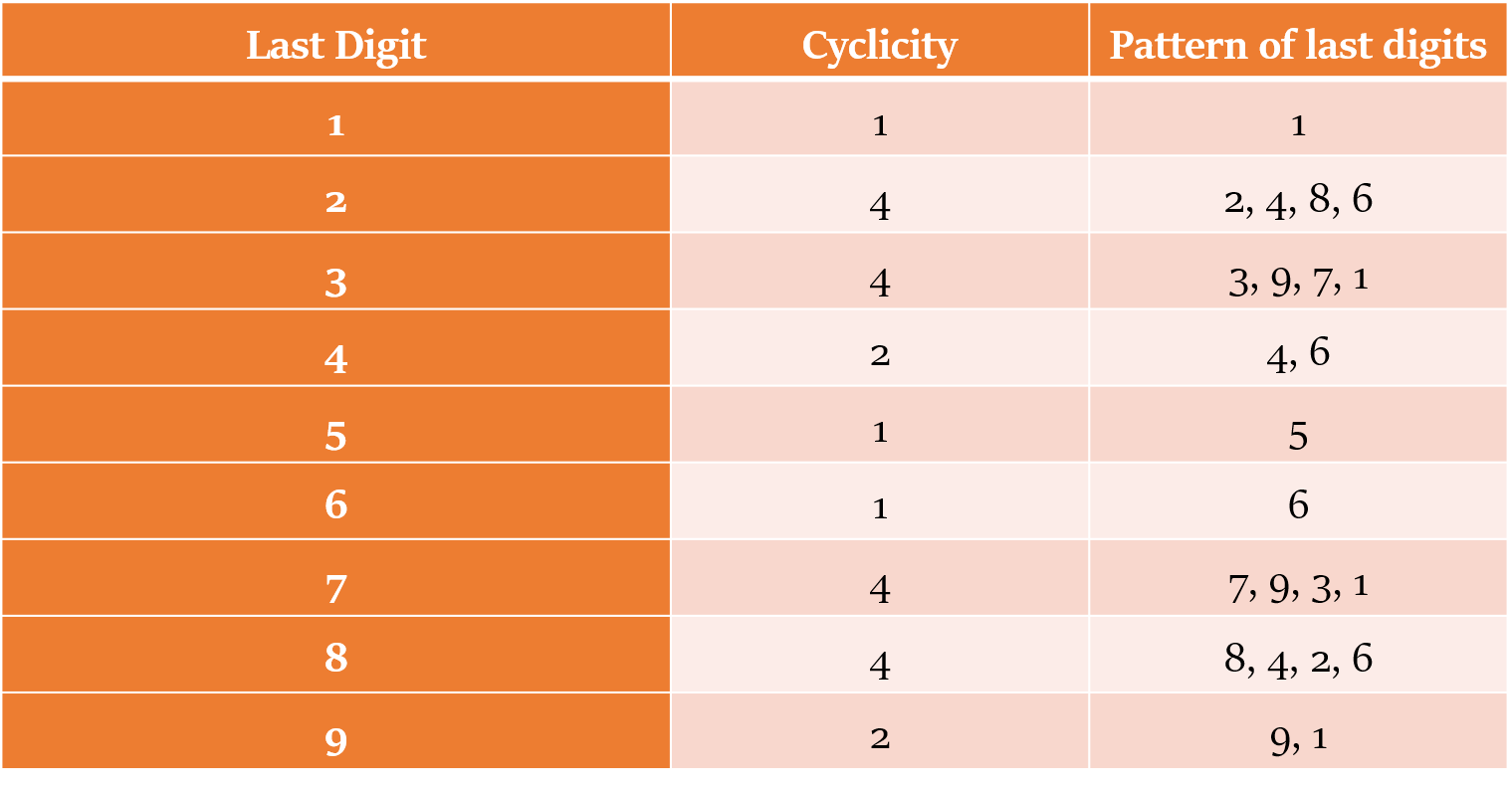Cyclicity Method
Concept of Cyclicity in Product
If we multiply any 2 numbers then the last digit of the product will depend on the last digit of these two numbers.
E.g. if we multiply 23 and 47, the last digit of this product will be the same as the last digit of 3 x 7, i.e. 1.
Concept of Cyclicity in Powers of numbers
We can extend this concept to other areas too, e.g. exponents of numbers.
E.g. Last digit of 3 = 3
Last digit of
Last digit of
Last digit of
Last digit of
As we can notice, the last digit of the exponents of 3 follow a repetitive pattern: 3, 9, 7, 1
In fact the last digits of the exponents of all numbers have a cyclicity. That is, the last digits of the powers of any number repeat after certain number of steps. If we find out after how many steps the last digit of the powers of a number repeat, then we can find out the last digit of any power of any number.
In the example above, the cyclicity of 3 was 4, i.e.
Let us look at the powers of 2.
Last digit of
As we can notice, the last digit of the exponents of 2 follow a repetitive pattern: 2, 4, 8, 6
So, the cyclicity of 2 is 4, i.e. for powers of 2 the last digits repeat after every 4 steps.

Q. Find the last digit of
Explanation:
The cyclicity of 2 is 4.
The largest multiple of 4 which is less than or equal to 39 is 36.
So, the last digit of
The last digit of
The last digit of